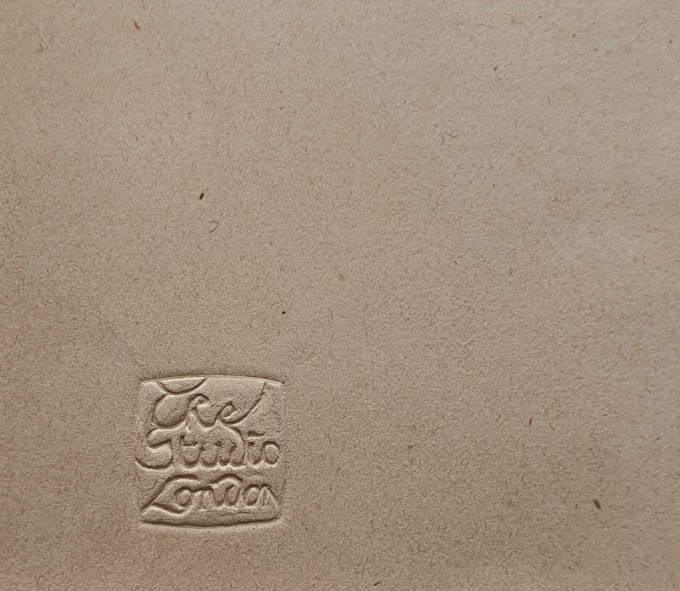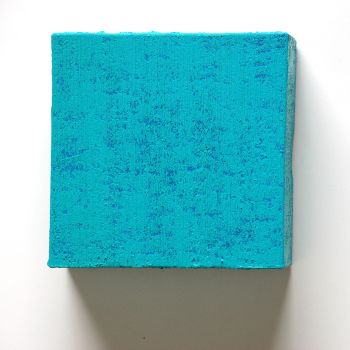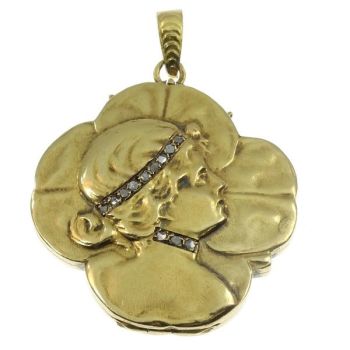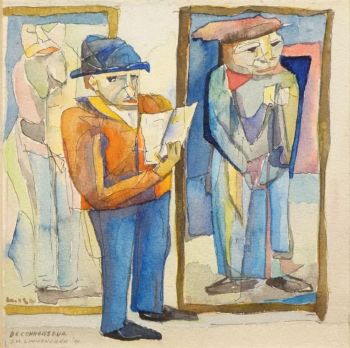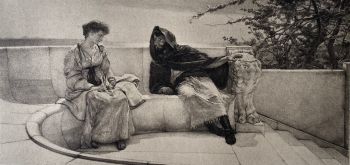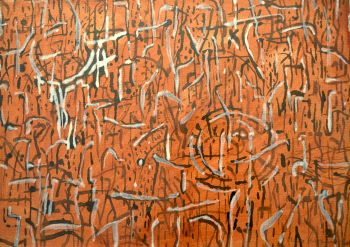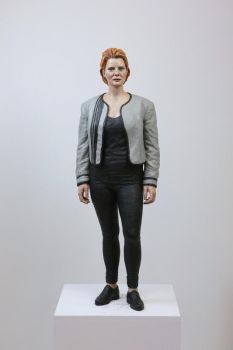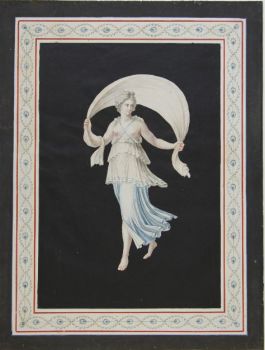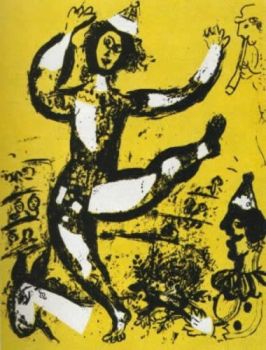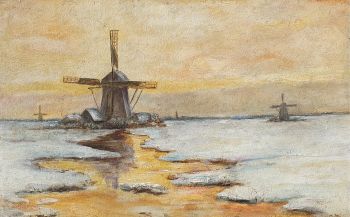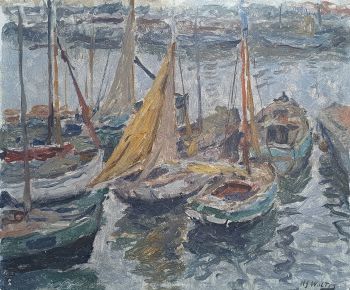Gants de Suède 1893
James McNeill Whistler
PapierLithographieImprimer
25.30 ⨯ 14.50 cm
ConditionVery good
€ 800
Klooster Fine Art
- Sur l'oeuvre d'art[EN]
James Abbott McNeill Whistler created Gants de Suède (suede gloves) for the English periodical The Studio. This monthly magazine was founded as an art publication. It focused on then-contemporary art and applied arts. In addition to the richly illustrated magazine, it was supplemented by a monthly auto-lithograph (a lithograph where the artist was directly involved in the process, as opposed to reproductive lithography).
For The Studio, Whistler re-created an earlier drawing he had made of his sister-in-law and secretary Ethel Birnie Philip. He employed his typical style of portraiture by portraying the woman in suggested full-length, but omitting to depict the hem of the dress and feet. Behind the woman, a deep shadow is suggested by broad hatching strokes with the lithographic pencil. Whistler shows his mastery as a draughtsman by contrasting the harsh shadows with barely legible markings to indicate volume in the dress.
The woman is dressed in fashionable clothing, and holds her suede gloves – which the work is named after. Gants de Suède was signed on the plate by Whistler’s butterfly monogram, and embossed with a blind stamp by The Studio on the lower-left corner.
On page 26 of the thirteenth edition of The Studio, the lithograph was mentioned: ‘The Lithographic Supplement issued with each copy of The Studio this month, is an hitherto unpublished drawing by Mr. James McNeill Whistler, entitled Gants de Suède. No copies will be sold separately and the edition is strictly limited.’
Besides the approximately 3000 The Studio proofs, a further 53 proofs were apparently printed, before the stone being erased. These additional prints do not carry the blind stamp.
The print is in good condition, aside from lightly toned paper, some minor stains and a superficial crease beyond the sight-edge.
[NL]
James Abbott McNeill Whistler maakte Gants de Suède (suède handschoenen) voor het Engelse tijdschrift The Studio. Dit maandblad was opgericht als een kunsttijdschrift dat zich richtte op eigentijdse kunst en kunstnijverheid. In aanvulling op het rijk-geïllustreerde blad, werd als supplement een maandelijkse auto-lithografie toegevoegd. Een auto-lithografie is een type waarbij de kunstenaar direct betrokken was bij het proces, in tegenstelling tot een reproductie-lithografie).
Voor The Studio bewerkte Whistler een tekening die hij eerder had gemaakt van zijn secretaresse en schoonzus Ethel Birnie Philip. Hij paste zijn kenmerkende stijl van portretteren toe, door de vrouw ten voeten uit te verbeelden, maar zonder de zoom van haar rok en voeten te verbeelden. Achter de vrouw is een diepe schaduw gesuggereerd met brede arceringen met het lithografisch potlood. Whistler toonde zijn vakmanschap door deze harde schaduwen af te zetten met de nauwelijks leesbare markeringen waarmee hij ruimtelijkheid in de jurk suggereerde.
De vrouw is modieus gekleed, en houdt de suède handschoenen vast waar de prent naar vernoemd is. Gants de Suède is gesigneerd op de steen door middel van Whistler’s vlindervormige monogram, en voorzien van een blinddruk van The Studio in de linker onderhoek.
Op pagina 26 van de dertiende editie van The Studio werd de lithografie besproken: ‘Het lithografische supplement dat deze maand bij elk exemplaar is uitgegeven, is een tot nu ongepubliceerde tekening door de heer James McNeill Whistler, getiteld Gants de Suède. Geen exemplaren worden afzonderlijk verkocht en de oplage is strikt gelimiteerd.’
Buiten de ongeveer 3000 drukken voor The Studio, werden er nog 53 exemplaren gedrukt voordat de lithografische steen gewist werd. Deze aanvullende drukken hebben geen blinddrukstempel.
De lithografie is in goede conditie. Buiten een lichte verkleuring aan het papier zijn er enkele kleine vlekjes en een oppervlakkige vouw buiten het beeldvlak. - Sur l'artisteJames Abbott McNeil Whistler (10 juillet 1834 - 17 juillet 1903) était un artiste né aux États-Unis, basé en Grande-Bretagne et actif pendant l'âge d'or américain. Opposé à la sentimentalité et à l’allusion morale dans la peinture, il était l’un des principaux partisans du credo «L’art pour l’art». Il était célèbre pour sa signature en forme de papillon stylisé possédant un long dard pour une queue. La signature était appropriée car elle combinait à la fois le caractère public combatif de Whistler et la délicatesse subtile dépeinte dans son travail. Whistler essayait toujours de trouver un parallèle entre la peinture et la musique qui signifiait mettre l'accent sur la primauté de l'harmonie tonale dans ce qu'il appelait «arrangements», «harmonies» et «nocturnes». Grâce à ses amitiés et à ses relations avec de nombreux artistes et écrivains de premier plan de son époque, Whistler a réussi à influencer la culture et le monde artistique de son temps. Son tableau le plus célèbre est "Arrangement en gris et noir n ° 1" (1871), communément appelé la mère de Whistler, le portrait vénéré et souvent parodié de la maternité.
Êtes-vous intéressé par l'achat de cette oeuvre?
Artwork details
Catégorie
Sujet
Style
Matériel & technique
Couleur
Related artworks
- 1 - 1 / 1
- 1 - 4 / 24
- 1 - 4 / 24
Marcel Jefferys
Jeune femme au collier dans un intérieur1890 - 1922
Prix sur demandeStudio 2000 Art Gallery
1 - 4 / 24- 1 - 4 / 24
- 1 - 4 / 12



